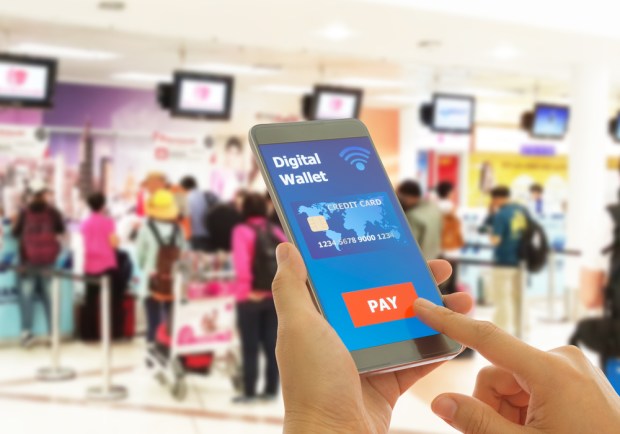In Payments, For Consumers, Form (Factor) Follows Function

Mobile wallets as a natural extension of contactless? Seems so, especially among the younger set — and as WePay found in a recent survey, 85 percent of 18-34 year olds are likely to use mobile wallets more in the near future than they do now. Paysafe CPO Daniel Kornitzer weighs in on what spurs consumers to embrace technology as they shop, in our latest Topic TBD
“The times, they are a changin’,” sang one young (and now not so young) bard. To which we amend: the payments, they are a changin’, too. That’d be the title of the reworked tune, and a stanza might detail the fickleness of youth – and a wary eye on cash.
In the latest Topic TBD, Daniel Kornitzer, EVP and CPO at Paysafe, delved into some findings tied to the company’s research into how and why people pay the way they do – and how they view everything from mobile shopping to shopping cart abandonment. The findings – gleaned from thousands of consumers in the United States, the United Kingdom and Canada – showed some shifting viewpoints toward payments, with significant differences between demographics as defined by age groups.
Data Point One: 85 Percent
This is the percentage of 18- to 34-year-olds who say they can see themselves using a mobile wallet more than they do today over the next few years.
Payments, said Kornitzer, are at the confluence of change wrought by fluctuations in consumer behavior and the ever-fluid technological landscape.
This was not a surprising data point, said Kornitzer. Youngsters, he said, “have been trained by the Ubers of the world” to expect convenience, apps and flexibility in how services are chosen, delivered and paid for.
The influence of contactless payments, he said, is borne out by the data showing that beyond the U.S., NFC payment options are well-entrenched. Mobile wallets and devices flow logically from those technologies, as does the adoption of biometrics, said Kornitzer, as convenience holds sway over cash.
As Webster noted that in-store mobile wallet usage has been relatively slow to gain traction in the United States, she asked if there were factors at play other than those tied to contactless technology. Is it the device that spurs contactless payment adoption?
It’s not the hardware that is the determining factor, said Kornitzer. Instead – and this is especially true of younger users, he said – the situation and the use case hold sway over form factor. On a cold day, he posited, you may be loath take off the gloves to dig out the wallet, dig out the card, insert the card into a terminal or ATM and retrieve cash. They’ll opt, then, for the device in pocket.
One key takeaway: The research shows that businesses must take a diversified approach in how they accept and process payments across traditional and emerging technologies, said Kornitzer – to wit, embracing all form factors.
Data Point Two: 25 Percent
This is the percentage of Canadian millennials who say they are cash free.
Note that “cash free” does not mean cashless – they may not be using hard currency, said Kornitzer, but these Canadians are indeed using alternative payment methods, such as cash vouchers. The use (or non-use) of cash and attitudes towards cash are among the biggest differences between 18- to 34-year-olds and 65-year-old (plus) respondents, he added.
He noted that overall (across the broad sample), people still carry cash. By way of extended example, Kornitzer said that individual consumers still carry multiple credit cards, have an order of preference in using them and like to have an option in case a card doesn’t go through. So it is with cash, as a safety net of sorts for transactions. “It doesn’t depend on any connection,” he said, as cash does not need technology to work and is pretty much universally accepted.
Data Point Three: 67 Percent
This is the percentage of millennials who abandoned an online shopping cart – and thus the transaction itself. The data, according to Kornitzer, shows that shopping carts are being used across an increasing number of use cases by millennials. “The power that has been given to the millennial is just incredible” in the hunt for more information and better prices, said Kornitzer.
Shopping cart abandonment is part of the process of weighing options, he said, with some impetus to leave the transaction unfinished coming from transaction delivery charges or transaction fees (they’re too high), indecisiveness, lack of inventory or extended delivery times. The data is consistent across age groups when it comes to discontent. The younger respondents, at 30 percent, cite delivery as a major factor in abandonment, with only a single digit percentage for the above 65 crowd. Lack of payment options is cited as a major factor for 26 percent of the 18- to 25-year-olds, and nine percent of the oldest cohort. “The younger generation tends to be at the leading edge of using payment methods,” said Kornitzer, while 65+ are more tied to standard methods.
As Webster asked, how do you convert browsers to buyers? Fees can pad small ticket items with additional charges comprising up to 40 percent of the item’s cost (on top of the price and taxes) to get it fast. Though there is a limit on how low merchants can go on shipping – and Amazon has an edge in that realm – free delivery does count here, he said.
Data security? A concern, not surprisingly, as Kornitzer said that 60 percent of respondents identified security as a main barrier on adoption of contactless payment. Worries on card exposure abound (lose your card and someone traipses all over town racking up charges). But in an age where worries over card safety are there, mobile is a natural salve when combined with biometrics, said Kornitzer. “They can take my phone, but they are not going to have my fingers,” he said.
